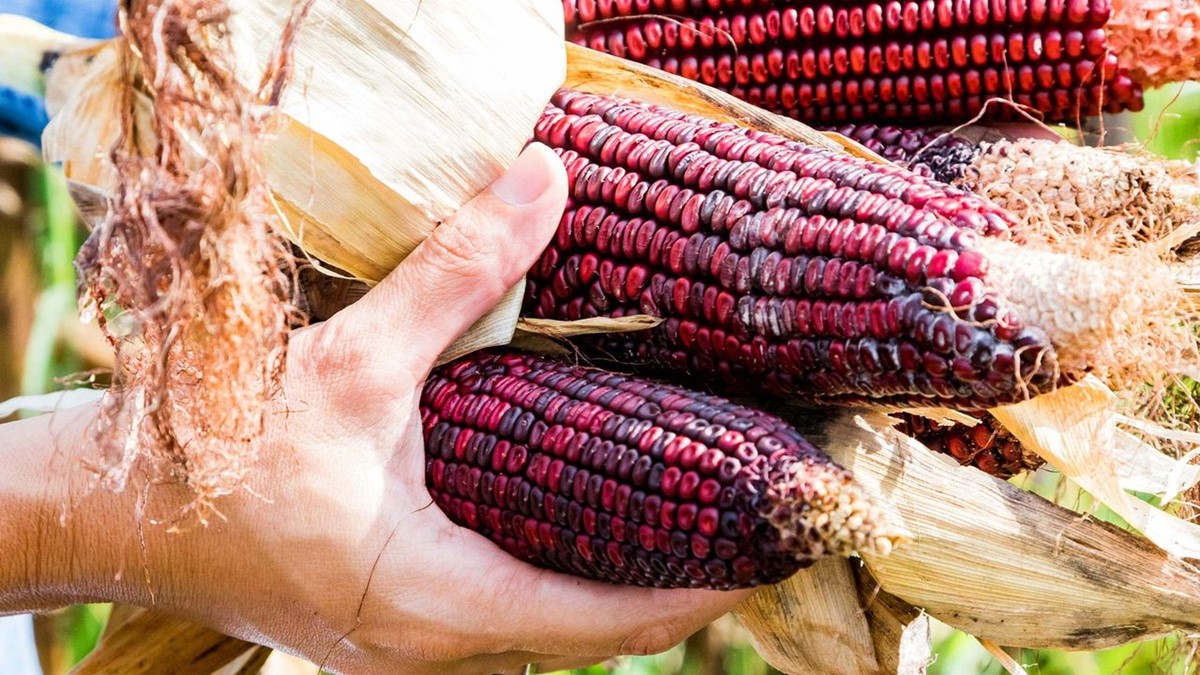
Purple corn isn't just a pretty face in the vegetable world. This vibrant maize packs a punch with its rich history, unique nutritional profile, and surprising health benefits. Originating from Peru, purple corn has been a staple in Andean diets for centuries. But what makes it stand out? Anthocyanins, the pigments giving it that striking hue, are powerful antioxidants. These compounds help fight inflammation, improve heart health, and even support weight management. Curious about how to incorporate this superfood into your diet? From traditional drinks like chicha morada to modern smoothies and salads, the possibilities are endless. Ready to learn more? Let's dive into 20 fascinating facts about purple corn!
Key Takeaways:
- Purple corn, or maíz morado, is a vibrant Andean crop packed with antioxidants and nutrients. It's been used for thousands of years in traditional Peruvian dishes and drinks, making it a colorful and healthy addition to any diet.
- Cultivating purple corn has environmental benefits, as it requires less water, helps prevent soil erosion, and preserves heirloom varieties. However, careful management is needed to protect the crop from pests and diseases.
What is Purple Corn?
Purple corn, also known as maíz morado, is a variety of corn native to the Andes region of South America. Its vibrant color isn't just for show; it holds a treasure trove of nutrients and history.
- Purple corn gets its color from anthocyanins, powerful antioxidants also found in blueberries and red cabbage.
- This type of corn has been cultivated for thousands of years, dating back to the ancient civilizations of Peru.
- Purple corn is often used to make a traditional Peruvian drink called chicha morada.
Nutritional Benefits of Purple Corn
Purple corn isn't just pretty; it's packed with health benefits. Let's explore some of the nutritional perks this colorful corn offers.
- Anthocyanins in purple corn help reduce inflammation and improve heart health.
- It contains high levels of phenolic acids, which have anti-cancer properties.
- Purple corn is rich in dietary fiber, aiding in digestion and weight management.
- It has a low glycemic index, making it a good option for people with diabetes.
Culinary Uses of Purple Corn
Purple corn isn't just for decoration; it has a variety of culinary uses that make it a versatile ingredient in the kitchen.
- In Peru, purple corn is used to make mazamorra morada, a traditional pudding.
- Purple corn flour can be used to make tortillas, bread, and other baked goods.
- It can be ground into a powder and added to smoothies for an antioxidant boost.
- Purple corn kernels can be popped like regular popcorn, offering a colorful twist on a classic snack.
Cultural Significance of Purple Corn
Purple corn holds a special place in the cultures of South America, particularly in Peru. Its significance goes beyond its nutritional value.
- The Incas considered purple corn a sacred crop and used it in religious ceremonies.
- In Andean festivals, purple corn is often featured in traditional dishes and drinks.
- Purple corn is a symbol of fertility and prosperity in many indigenous cultures.
- It is often used in traditional medicine to treat various ailments, from digestive issues to high blood pressure.
Environmental Impact of Growing Purple Corn
Growing purple corn has its own set of environmental benefits and challenges. Let's take a look at how this crop interacts with its surroundings.
- Purple corn is often grown using traditional farming methods, which are more sustainable than industrial agriculture.
- It requires less water than many other crops, making it a good option for arid regions.
- The deep root system of purple corn helps prevent soil erosion and improves soil health.
- Growing purple corn can help preserve biodiversity by maintaining heirloom varieties that might otherwise be lost.
- However, like all crops, it is susceptible to pests and diseases, requiring careful management to ensure a healthy harvest.
The Final Scoop on Purple Corn
Purple corn isn't just a pretty face. Packed with antioxidants, it can help fight inflammation and boost heart health. Its anthocyanins give it that vibrant color and offer numerous health benefits. This corn is a staple in Peruvian cuisine, used in dishes like chicha morada and mazamorra morada. Farmers love it for its resilience and versatility. Whether you're looking to add some color to your plate or boost your diet with nutrient-rich foods, purple corn is a fantastic choice. It's not just a trend; it's a superfood with a rich history and promising future. So next time you're at the market, grab some purple corn and enjoy its unique flavor and health perks.
Frequently Asked Questions
Was this page helpful?
Our commitment to delivering trustworthy and engaging content is at the heart of what we do. Each fact on our site is contributed by real users like you, bringing a wealth of diverse insights and information. To ensure the highest standards of accuracy and reliability, our dedicated editors meticulously review each submission. This process guarantees that the facts we share are not only fascinating but also credible. Trust in our commitment to quality and authenticity as you explore and learn with us.


